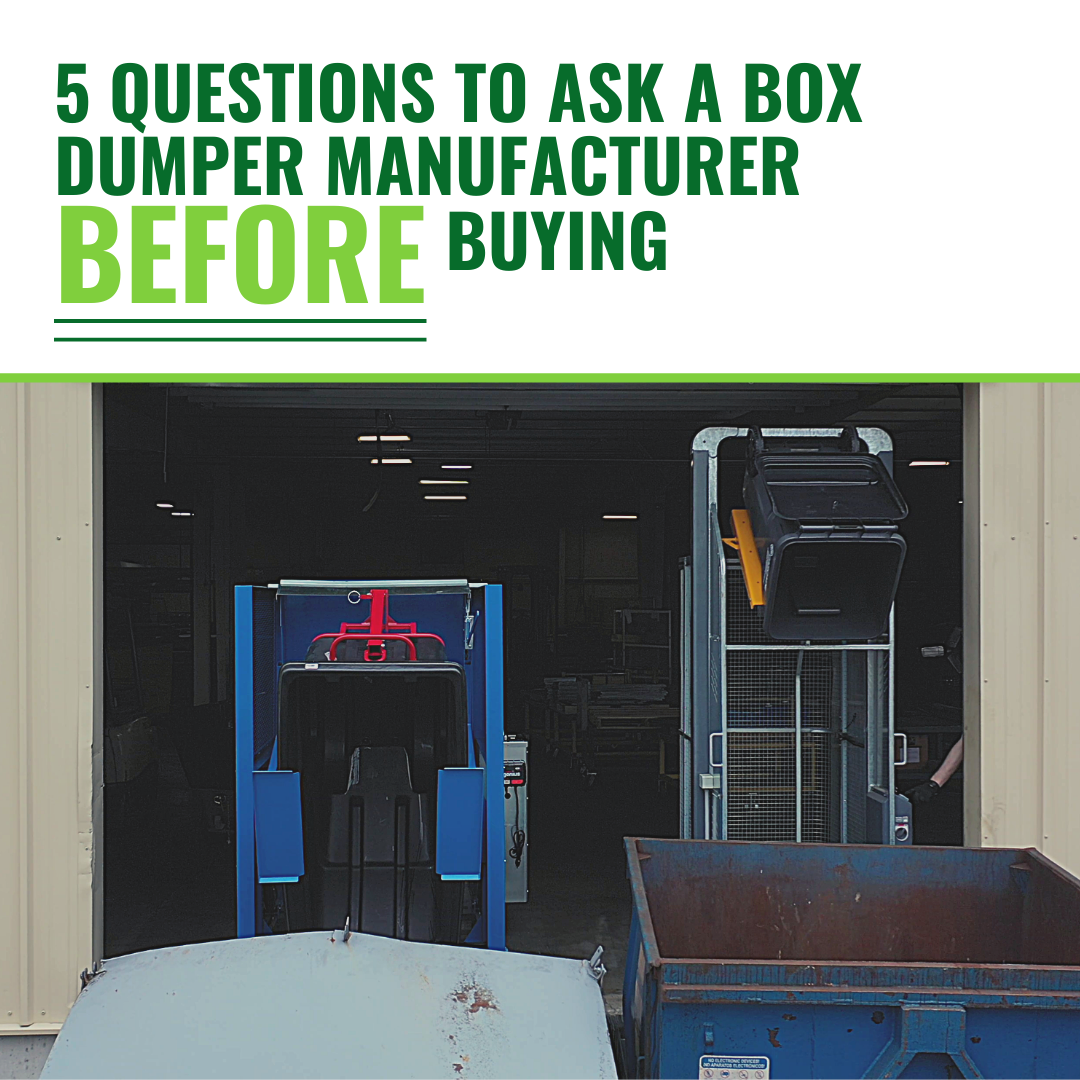We use cookies to make your experience better. To comply with the new e-Privacy directive, we need to ask for your consent to set the cookies. Learn more.
5 Questions to Ask a Box Dumper Manufacturer Before Buying
A box dumper (also called a bin tipper, tote dumper, or bin dumper, among other names) can address one of the most common industrial ergonomic hazards. If workers need to lift a heavy container, an appropriately equipped box dumper limits the chances of musculoskeletal disorders (MSDs). As we’ve noted before, the Occupational Safety and Health Administration (OSHA) lists “maintenance and repair workers, general" among its high-risk occupations for MSDs, and box dumpers prevent workers from exerting large amounts of force.

The devices also improve throughput substantially by standardizing the task. After all, when machinery handles the lifting, any worker can empty bins, dispense chemicals, or perform other lifting tasks — and box dumpers can tip containers much more quickly and consistently than manual power.
When used properly, a box dumper allows for significant improvements in efficiency and safety, and they’re an excellent investment for any operation. However, to get the most out of the investment, it’s important to research your purchase. By asking your box dumper manufacturer several key questions, you can find a product that fits the unique needs of your business. Here are a few considerations to keep in mind.
What is the box dumper’s lifting mechanism?
Most industrial box dumpers use hydraulic lifting mechanisms, though some use hand-winches for lighter loads (the Simpro Ezi-MT, for example, is an economical hand-winch lifter ideal for handling recycling and waste bins).
Determine whether the lift will require external power. Battery-operated devices like the Simpro Multi-Tip work well when an external electrical supply is unavailable or infeasible. If your operation handles lifting tasks in set areas — for example, if you always dump boxes onto a conveyor line, or if you need a specialized device for dumping liquids for mixing — a stationary bin tipper might make sense. However, the best practice is always to plan for scalability. Modern box dumpers offer extraordinary lifting capacity with built-in battery power, so for most operations, mobile dumpers are a better option.
Does the box dumper’s capacity meet my requirements?
This might go without saying, but ensure that the dumper will be able to lift your containers to the appropriate dumping heights. Unfortunately, volume-to-weight calculations can’t be standardized, so you’ll need to do some groundwork to determine the average and maximum weight of your operation’s filled containers.
Quality box dumpers are designed to far exceed the capacity of the containers being lifted. The Simpro Dumpmaster DMA1800, for instance, has a standard capacity of 550 pounds (the average weight of a filled 96-gallon cart is around 250 pounds). For heavier industrial applications, MegaDumpers® can empty bins weighing up to 1,320 pounds at heights beyond 23 feet.
Will the box dumper accommodate specialized containers?
If your operation uses non-standard containers, you’ll need a box dumper that can be customized for your application (or you’ll need to switch to standardized bins, but this isn’t always feasible).
Many devices are designed primarily for standard bins but can be optimized for specialized containers. The MegaDumper® series can tip almost any type of container safely, while solutions like the Tilt Cart Dumper (TCD) work well for boxes up to 47.75 inces long, 26 to 35.75 inches wide, and 39.75 to 47.75 inches tall.
Does the device have appropriate safety features?
Never overlook safety — after all, improved ergonomics is one of the primary selling points of an industrial box dumper, so you’ll want a device that keeps workers from taking unnecessary risks.
Look for tote dumpers with enclosed travel paths and retaining bars. Barriers should prevent workers from interacting with the loaded materials during tipping. Full-cage wire mesh guards are standard on most hydraulic-electric bin dumpers (including the Dumpmaster and MegaDumper series). Lift mechanisms should also be enclosed.
Many units have optional operator guards, which provide additional protection from chemical splashes and glass shards. Ask for information about available optional accessories to determine whether they’re suitable for your application.
Is the box dumper made from high-quality materials?
Most industrial box dumpers feature stainless steel construction, which is necessary to ensure the durability of any piece of material handling equipment. However, you’ll want to make sure that the dumper uses powder-coated steel to prevent scratches and corrosion.
If the device has an electronic control panel, make sure that the panel is appropriately guarded with an IP rating of at least 66, particularly if you plan on using the box dumper to handle liquids. Durable casters are essential for non-stationary equipment, and hydraulic components should be partially or fully enclosed. Ask for demo videos and look for units with simple, fluid travel paths; remember, minor inefficiencies quickly add up to lost time for workers.
By asking these questions, you can find ways to improve throughput when emptying waste bins, handling medical waste, adding products/components to a conveyor system, or handling any other task that would otherwise require manual lifting. You’ll also ensure that your workers avoid poor ergonomics (provided that they receive proper training during implementation).
Well-made box dumpers will simplify important lifting tasks while keeping your workforce on the floor — for nearly every operation, that’s an investment worth making.
